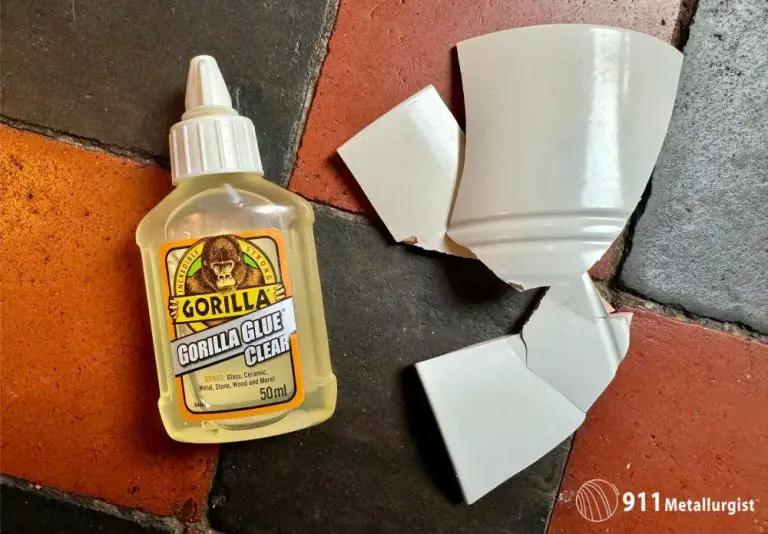How Do You Use Red Clay From The Ground?
Red clay is a type of soil that develops in iron-rich environments where the annual rainfall is below 20 inches. It gets its signature red color from iron oxide, also known as rust. Red clay is formed over long periods as quartz and other rock fragments in the soil break down into fine particles. It has a high concentration of kaolinite, hematite, goethite and gibbsite minerals that give it a characteristically red color.
Red clay has been used for centuries in a wide range of applications due to its composition and properties. Some of the most common traditional uses include making pottery, bricks and decorative tiles. Red clay is also valued in gardening and agriculture for its ability to retain nutrients. Today, red clay is used for everything from health and beauty treatments to industrial manufacturing.
Origins and Composition
Red clay gets its distinctive color and properties from the presence of iron oxides. It forms over long periods through the chemical weathering and breakdown of rocks containing iron-bearing minerals. As rainwater permeates down through soil and bedrock, it reacts with iron compounds like biotite, hornblende, and hematite. This oxidizes the iron, converting it into red hues.
The weathering process breaks down the original rock minerals into clay-sized particles less than .002 mm in diameter. In addition to iron oxides, red clay contains various other minerals and nutrients like silica, magnesium, calcium, sodium, and potassium. The exact mineral composition depends on the source rocks it formed from, but typical constituents are kaolinite, illite, montmorillonite, quartz, feldspar, and organic matter.
Red clay deposits are found across the world, often in tropical regions with heavy rainfall that accelerates the weathering process. Major deposits occur in Australia, Brazil, China, and many parts of Africa and Southeast Asia. The soft, malleable properties of red clay make it useful for a wide variety of applications.
Traditional Uses
Red clay has a long history of use in traditional practices across many cultures. Some of the most common traditional uses include:
Pottery
Red clay is prized for making pottery due to its rich terracotta color and workability. When fired at high temperatures, the clay hardens into a durable, water-resistant material perfect for making vessels for cooking, storage, and serving food and water.
Painting/Dyes
The natural deep red pigment of clay makes it useful for dying fabrics and producing natural paints. Many ancient cultures created cave paintings using red ocher, a clay containing iron oxide. Even today, red clay is used to dye fabrics, yarn, and other textiles.
Construction
Red clay’s stability and strength have made it a building material for millennia. Ancient cultures used clay for bricks and tiles. Packed clay is still used for flooring, plastering walls, and building houses, especially in hot, dry climates where it helps regulate interior temperatures.
Gardening and Agriculture
Red clay is commonly used as a soil amendment in gardening and agriculture to improve drainage, aeration, and moisture retention in soil. The iron oxides in red clay give it a strong ability to hold and slowly release water and nutrients. This makes it beneficial for moisture retention in sandy soils or improving drainage in heavy soils.
When blended into garden beds or mixed into potting soil, red clay increases the soil’s cation exchange capacity, allowing it to hold more nutrients. The small particle size of clay also helps hold nutrients near the plant roots. Incorporating as little as 10-20% red clay into an existing soil can create an optimal soil texture for growing plants. The moisture retention properties also reduce watering requirements.
For agriculture, red clay is useful as a soil amendment for crops that require consistent moisture but are prone to waterlogging. The moisture retention helps buffer crops against droughts or dry spells. Slow nutrient release provides a steady supply of nourishment. With proper management, red clay improves yields and crop health while reducing irrigation needs.
Health and Beauty
Red clay has been used for centuries in health and beauty treatments, especially for skin and hair care. The natural minerals in red clay provide a number of benefits:
Skin Care
Red clay masks are a popular way to nourish the skin. The clay gently exfoliates dead skin cells and draws out impurities from pores. It improves blood circulation to the skin and reduces inflammation and acne. The minerals in red clay, like iron oxide and magnesium, provide nutrients that rejuvenate dull and tired skin. Red clay masks leave skin looking radiant and youthful.
Hair Care
Using red clay as a hair mask can help cleanse the scalp and strengthen the hair. The clay removes product buildup, dirt, and excess oils from hair. It also deposits minerals into the scalp and hair follicles for healthier growth. Applying a weekly red clay hair mask leaves hair looking shiny and revitalized.
Medicinal Uses
In traditional medicine, red clay has been used both externally and internally. Externally, red clay pastes treat skin irritation, wounds, and stings. Internally, diluted red clay can address digestive issues and anemia. However, internal use should only be done under the guidance of a medical professional.
Art and Crafts
One of the most popular ways to use red clay is for artistic endeavors and crafting. The vibrant red color and malleable texture make it an ideal medium for sculpting, jewelry making, ceramics, and more. Here are some of the top uses of red clay in arts and crafts:
Sculpting
Sculptors have long prized red clay for its versatility and ability to be molded into detailed shapes. The natural earthy red tone allows sculptors to create pieces that reflect the material’s origins. Red clay can be worked into abstract shapes or detailed works depicting people, animals, natural elements, and more. It also takes well to carving and incising details.
Jewelry Making
Jewelry artisans utilize red clay to handcraft wearable art from scratch or make molds for casting unique jewelry pieces. The flexibility of the material makes it easy to shape into beads, pendants, buttons, earrings, and other accessories. Red clay’s durability also makes it suitable for items worn daily.
Ceramics
From dishes and vases to tiles and decorative objects, red clay allows artisans to craft beautiful ceramic ware. The earthy material can be thrown on a wheel, molded by hand, or poured into molds. Red clay’s high iron content gives it a distinctive color and texture that creates one-of-a-kind pieces. When fired at high temperatures, items gain increased strength and vibrancy.
Industrial Applications
Red clay has many industrial applications thanks to its unique physical properties and composition. One of the primary uses is in manufacturing. The natural mineral content of red clay makes it ideal for producing ceramics, bricks, and roof tiles. Its high iron oxide content gives it a reddish color when fired, making it aesthetically pleasing. Structural clay products like bricks and tiles made from red clay are durable, fire resistant, and weather resistant.
Clay bricks from red clay have been used in construction and engineering projects for centuries. Modern dry-press manufacturing techniques allow mass production of uniform bricks for large-scale construction. When mixed with concrete, red clay can increase strength and durability. Civil engineers often use red clay for linings canals, dams, and landfill sites. Its water resistance helps prevent erosion and structural damage.
Beyond construction applications, red clay is used for manufacturing porcelain and bone china. It can also be used in foundries for casting metals. The heat resistance and molding properties of red clay make it an indispensable industrial material for creating durable, high-quality products.
Sourcing Red Clay
Red clay can be found in many regions around the world. Some of the most notable deposits are located in North America, Africa, Australia, and Asia. The largest source of red clay in the United States is in Georgia, where rich deposits are mined extensively.
There are a few common methods for harvesting natural red clay deposits:
- Strip Mining – Removing surface layers of soil to expose the clay deposits underneath. This is an intensive process but allows access to large clay seams.
- Pit Mining – Digging pits into clay deposits and extracting material from below ground level. This is less disruptive to the surface landscape.
- Dredging – For clay deposits located under bodies of water, specialized dredging boats can dig and collect clay.
Proper practices for mining red clay aim to limit environmental impact. Reclamation efforts to restore mined land are important. Responsible mining also strives to limit effects on local water tables and avoids contaminating water sources.
Environmental Considerations
While red clay has many beneficial uses, it’s important to be mindful of the environmental impact of sourcing and using it. Excessive clay extraction can lead to land degradation, deforestation, and disruption of local ecosystems. When sourcing clay, aim to work with providers who engage in sustainable practices. Look for clay that is ethically sourced from locations where the environmental impact is minimized through reclamation and habitat restoration efforts.
There are also steps that can be taken when using red clay to reduce environmental harm. Reuse and repurpose clay when possible, and dispose of waste clay properly to avoid pollution. When working with clay, use dust control measures and avoid contaminating water sources. Consider ways to offset the carbon emissions associated with clay extraction and transportation. Overall, being an informed and conscientious consumer of red clay helps ensure its ongoing availability while protecting the planet for future generations.
Conclusion
Red clay has been utilized by cultures around the world for millennia, owing to its rich color, natural abundance, and versatile properties. From traditional medicines and artworks to modern high-tech applications, red clay continues to find new uses that improve our lives.
Looking to the future, red clay will likely play an increasing role as a sustainable material and natural pigment. Research into new industrial uses could lead to innovative construction materials, pollution solutions, and dyed fabrics. At the same time, red clay’s traditional uses in pottery, cosmetics, and home remedies are being rediscovered for their environmental and health benefits.
While sourcing red clay sustainably will be an ongoing consideration, the material’s potential remains great. With human creativity and respect for the earth, red clay will continue shaping culture and living spaces for generations to come.




